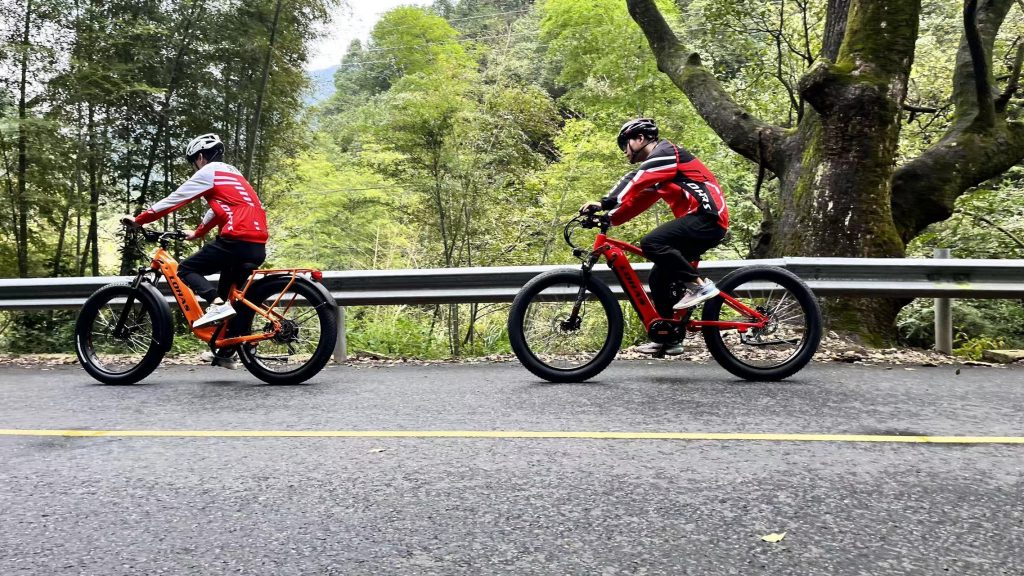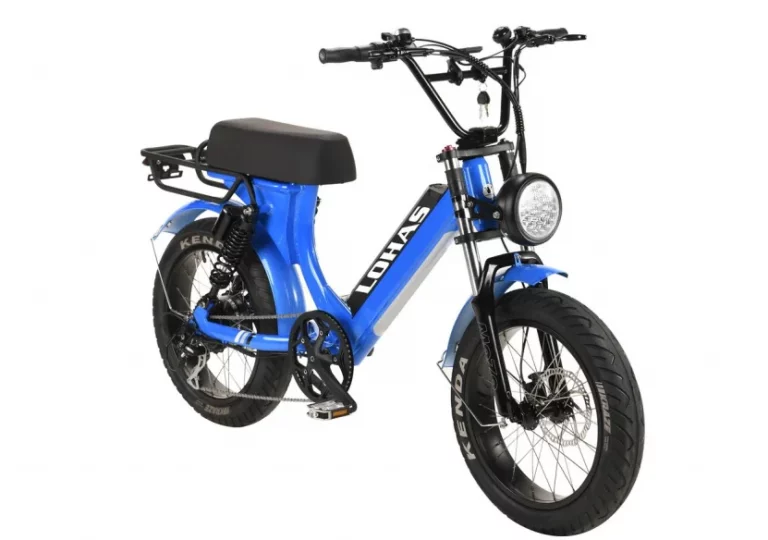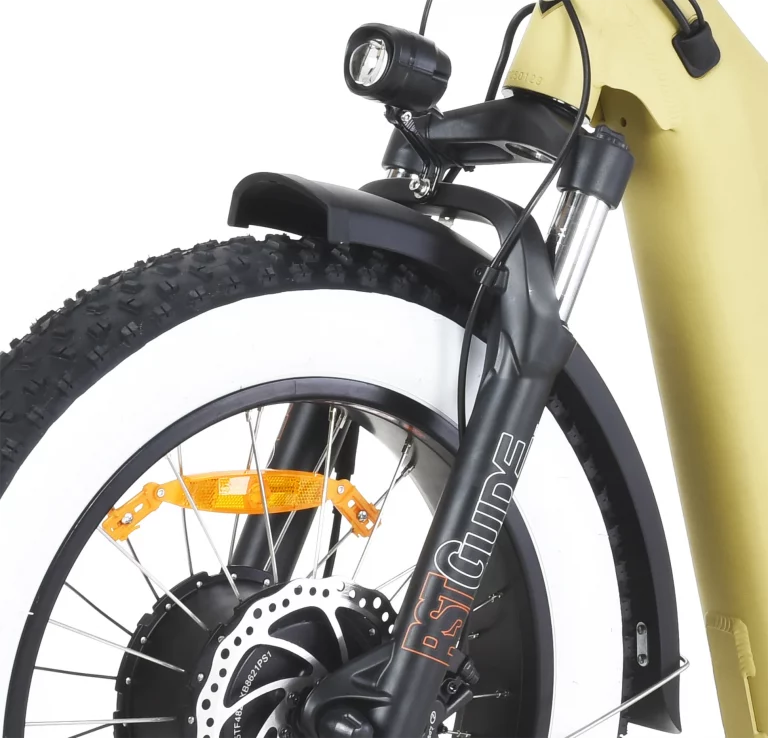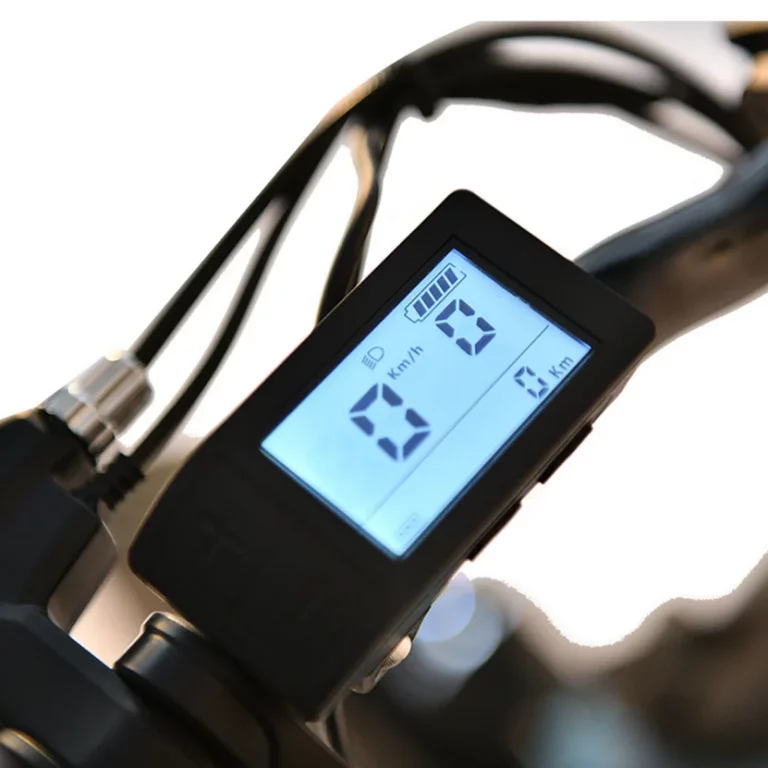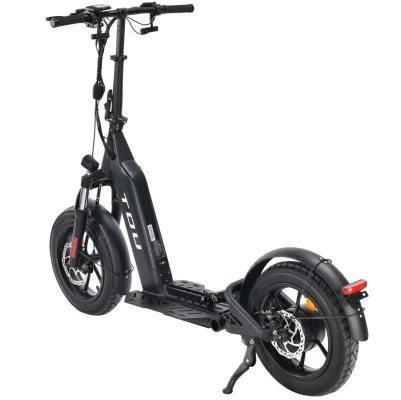Embracing the Thrill of Cycle Sports and Mountain Bike Trials
Understanding the Allure of Extreme Sports
Extreme sports have captivated enthusiasts worldwide, offering a rush that conventional activities simply cannot match. Engaging in cycle sports and mountain bike trials provides individuals with the chance to conquer uncharted terrains, testing their limits both mentally and physically. The challenge and adrenaline involved become a form of escapism, allowing participants to break free from everyday routines and immerse themselves in the unpredictable beauty of nature. An electric mountain bike amplifies this experience, marrying tradition with modern technology to push boundaries even further.
Psychological and Physical Benefits
Mountain biking, especially on an electric mountain bike, extends numerous psychological and physical benefits. On a psychological level, overcoming trails increases self-esteem and provides a sense of accomplishment. The focus required to navigate complex terrains promotes mindfulness, reducing stress and enhancing mental clarity. Physically, this sport is a full-body workout that improves cardiovascular health, muscle strength, and endurance. The electric assist function of an electric mountain bike helps riders go farther and tackle steeper inclines without exhausting themselves prematurely, allowing for more extended and fulfilling rides.
Popularity and Community Involvement
The popularity of mountain biking and its community involvement has soared in recent years. Group rides, competitions, and local clubs foster a sense of camaraderie and collective achievement. Events and social media platforms connect riders worldwide, sharing tips, routes, and experiences. The advent of electric mountain bikes has broadened this community even further, welcoming those who may have been previously deterred by the sport’s physical demands. These bikes make the sport more inclusive, encouraging more people to participate and share their passion for mountain biking.
The Evolution of Mountain Biking
Historical Background of Mountain Biking
The roots of mountain biking trace back to the 1970s when a group of cycling enthusiasts sought greater challenges beyond paved roads. They modified their bikes with stronger frames and wider tires to withstand the rigors of off-road terrain. This grassroots movement quickly gained momentum, leading to the birth of mountain biking as a recognized sport. As the years progressed, the sport evolved and diversified, giving rise to various sub-disciplines such as downhill racing, cross-country riding, and free-riding, each with its unique challenges and thrills.
Technological Advancements and Modern Innovations
Development of Electric Mountain Bikes
Technological advancements have significantly transformed mountain biking, introducing innovations that enhance performance and safety. Among the most notable developments is the electric mountain bike, which integrates an electric motor to assist with pedaling. This allows riders to conquer steeper gradients and cover longer distances with less effort. The combination of traditional biking and electric assist offers a versatile and highly capable ride, pushing the boundaries of what was once deemed possible in mountain biking trials.
Safety Gear and Accessories
In parallel with bike advancements, the development of safety gear and accessories has been crucial. Modern mountain bikers are equipped with state-of-the-art helmets, padded clothing, and protective eyewear, which significantly reduce the risk of injury. Innovations such as full-face helmets, body armor, and advanced gloves provide added security, ensuring that cyclists can confidently tackle challenging terrains. Accessories like GPS systems, hydration packs, and multi-tool kits enhance the biking experience, preparing riders for any scenario they might encounter.
Electric Mountain Bikes: Redefining the Experience
What is an Electric Mountain Bike?
An electric mountain bike, often referred to as an e-MTB, is a bicycle equipped with an integrated electric motor that assists the rider’s pedaling efforts. This motor is typically powered by a rechargeable battery, which provides varying levels of assistance depending on the rider’s needs and the terrain. Whether navigating steep climbs or long-distance trails, an e-MTB offers a unique blend of human and electric power, making it an invaluable asset for both seasoned riders and newcomers to the sport.
Comparing Traditional vs. Electric Mountain Bikes
Performance Metrics
When comparing traditional mountain bikes to their electric counterparts, several key performance metrics stand out. Traditional bikes rely solely on the rider’s pedal power, making them ideal for those seeking a pure, unassisted biking challenge. On the other hand, electric mountain bikes provide pedal assistance that can be adjusted to different levels, offering significant help during uphill climbs and long rides. This can result in prolonged endurance and the ability to tackle more demanding courses that might be too challenging on a traditional bike.
User Experience
The user experience on an electric mountain bike differs notably from that of a traditional mountain bike. The electric assist feature allows riders to modulate their effort, reducing fatigue and making the sport more accessible to a broader audience. For experienced riders, it opens up opportunities for exploring tougher terrains and longer distances. For beginners, it offers a less intimidating entry point into the sport, helping them build confidence and skill more gradually. Overall, the integration of electric assistance in mountain biking serves to enhance the thrill and make the sport more versatile and inclusive.
Key Features of Electric Mountain Bikes
Motor and Battery Specifications
The performance of an electric mountain bike largely depends on the specifications of its motor and battery. Generally, e-MTBs are equipped with mid-drive motors that deliver balanced power and assist efficiency. Key aspects to consider include the wattage of the motor, which determines how much assistance it can provide, and the battery capacity, typically measured in watt-hours (Wh), which influences how long the battery can last on a single charge. Higher capacity batteries allow for longer rides but also add to the weight of the bike. The latest models feature advanced lithium-ion batteries that are lightweight, have long lifespans, and can be recharged quickly.
Frame Design and Durability
Frame design and durability are crucial components of an electric mountain bike. E-MTB frames are often constructed from materials like aluminum or carbon fiber, which provide a strong yet lightweight structure. The design typically incorporates reinforced areas to withstand rough terrains and the additional strain from the motor and battery. Full suspension frames are common in electric mountain bikes, offering increased comfort and control by absorbing shocks from uneven ground. Durability is paramount; thus, manufacturers often include robust components that can endure the demanding conditions of off-road cycling.
Suspension Systems for Different Terrains
The suspension system of an e-MTB is designed to handle a variety of terrains. These bikes are usually equipped with either front suspension (hardtail) or full suspension (dual suspension) setups. Hardtail electric mountain bikes, which include front suspension only, are generally lighter and more efficient for climbing and smooth trails. Conversely, full suspension bikes, which feature both front and rear shocks, are adept at navigating rough and technical trails, providing superior handling and comfort. Advanced suspension systems often come with adjustable settings to tailor the riding experience to specific terrains, enhancing performance and rider confidence.
Choosing the Right Electric Mountain Bike
Assessing Personal Needs and Preferences
Choosing the right electric mountain bike begins with a thorough evaluation of personal needs and preferences. Riders should consider factors such as their fitness level, riding goals, and the type of trails they wish to tackle. For those prioritizing long-distance rides, a model with a high-capacity battery and efficient motor would be ideal. Riders focused on technical trails may require a bike with advanced suspension systems and robust frame construction. Additionally, it’s essential to contemplate the bike’s weight, as heavier models can be more challenging to maneuver, especially when the battery is not in use.
Analyzing Terrain Types and Riding Styles
Trail Riding
Trail riding is one of the most popular styles in mountain biking, and electric bikes have become a favored choice for this. E-MTBs designed for trail riding typically feature balanced suspension, moderate travel, and a versatile frame that can handle various trail conditions. These bikes are engineered to offer both performance and comfort, making them suitable for a mix of climbing, descending, and technical sections. The electric assist allows riders to maintain momentum and tackle challenging sections without excessive fatigue, enhancing the overall trail riding experience.
Downhill Racing
Downhill racing demands a bike that can withstand gravity-defying descents and rough terrain. Electric mountain bikes for downhill racing are built with robust frames, long-travel suspension systems, and powerful brakes. The electric assist helps in climbing back to the start of the descent more efficiently, conserving energy for the downhill sections. These bikes are constructed to absorb heavy impacts and provide stability at high speeds, ensuring that riders can safely navigate steep and rocky trails.
Free-ride Challenges
Free-ride mountain biking involves a combination of downhill and extreme stunt riding, requiring highly agile and durable electric mountain bikes. E-MTBs for free-riding are often equipped with full suspension, strong frames, and high-torque motors to handle jumps, drops, and technical maneuvers. These bikes are designed to be resilient and flexible, allowing riders to push their limits and perform complex tricks. The electric assist function enables riders to perform multiple runs with minimized fatigue, thus maximizing practice time and improving skills.
Maintenance Tips for Electric Mountain Bikes
Regular Inspection Routines
Regular maintenance is vital for the longevity and performance of an electric mountain bike. Riders should conduct routine inspections to check for wear and tear on components such as tires, brakes, and the drivetrain. Ensuring that bolts and screws are tightened and inspecting the frame for cracks or damage can prevent potential failures. It’s also essential to keep the bike clean, especially after rides through muddy or dusty conditions, as dirt build-up can affect the bike’s mechanical and electronic components. Periodic professional servicing can further ensure that the bike remains in optimal condition.
Battery Care and Longevity
Proper battery care is crucial for maintaining the efficiency and lifespan of an e-MTB. Riders should follow manufacturer guidelines for charging cycles, avoiding overcharging or completely draining the battery. It’s recommended to store the battery in a cool, dry place and keep it charged to about 50-70% if not used for extended periods. Regularly checking the battery for signs of wear or damage and ensuring that connectors are clean and secure can prevent performance issues. Investing in a second battery can also be advantageous for longer rides or to have a backup in case one runs out of charge.
Safety Considerations in Electric Mountain Biking
Essential Safety Gear
Wearing appropriate safety gear is imperative when engaging in electric mountain biking. Riders should always wear helmets designed for mountain biking, providing full protection for both the head and face. Additional safety gear includes padded gloves, knee and elbow pads, and body armor to guard against falls and impacts. Protective eyewear is essential to shield eyes from debris and UV rays. Reflective clothing or gear can enhance visibility in low-light conditions, making it easier for others to spot the rider.
Best Practices for Injury Prevention
To mitigate the risk of injury, riders should adhere to best practices, such as proper warm-up exercises before riding and cooldown stretches afterward. Correct posture and bike handling techniques can reduce strain on the body and improve control. It’s crucial to pace oneself and not push beyond personal limits, especially when navigating unfamiliar or challenging trails. Riders should stay hydrated and take breaks as needed to maintain energy levels and prevent exhaustion. Learning to recognize signs of fatigue and knowing when to stop can also prevent accidents and injuries.
Navigating Different Terrains Safely
Different terrains present unique challenges, and safe navigation requires specific techniques. On rocky or uneven ground, maintaining a low center of gravity and using the bike’s suspension effectively can improve stability. When climbing steep gradients, leaning forward and modulating pedal assistance can prevent wheel slips. Descending requires controlled braking and body positioning to manage speed and maintain balance. In muddy or slippery conditions, reducing tire pressure and choosing a lower gear can enhance traction and control. Practicing these techniques in various environments can build confidence and proficiency.
Enhancing Skills in Mountain Bike Trials
Training Techniques for Beginners to Advanced Riders
Whether a novice or an experienced rider, training techniques are essential for skill development in mountain bike trials. Beginners should focus on fundamental skills such as balance, steering, and braking. Practicing on varied terrains gradually can help build confidence and adaptability. Intermediate riders can advance to more technical skills, including jump techniques, wheel lifts, and navigating obstacles. Advanced riders may benefit from drills focused on precision and speed, incorporating complex maneuvers and high-speed descents. Consistent practice and progression in training ensure continuous improvement and readiness for diverse trail challenges.
Importance of Practice Sessions
Core Balance Exercises
Core balance is critical in mountain biking, affecting stability and control on the bike. Riders should incorporate specific exercises into their routine, such as planks, leg lifts, and balance board workouts, to strengthen core muscles. On-bike practice, such as riding slowly on narrow paths or practicing track stands, can further enhance balance. Regularly engaging in these exercises helps improve overall bike handling and maneuverability, making it easier to navigate challenging trails.
Technical Maneuver Drills
Technical maneuver drills are vital for mastering difficult sections of mountain bike trials. Riders can practice drills such as bunny hops, manual wheel lifts, and tight cornering to refine their skills. Setting up a practice course with marked obstacles or cones can simulate trail conditions and allow for targeted training. Practicing these maneuvers repeatedly builds muscle memory and confidence, equipping riders to handle real-world challenges more effectively. Advanced drills can include techniques for descending steep gradients, navigating rock gardens, and performing controlled jumps, further enhancing technical proficiency.


